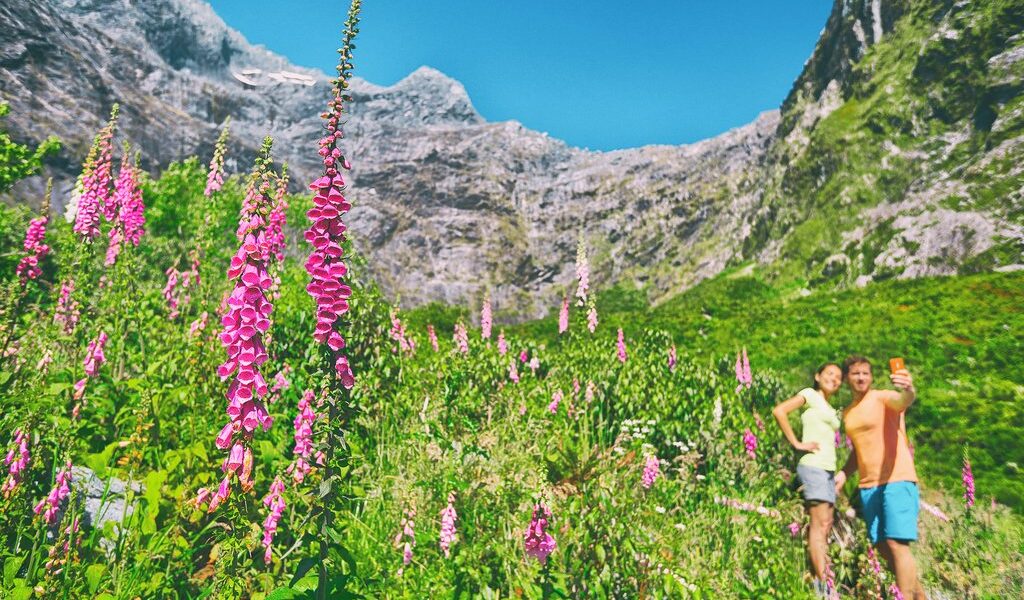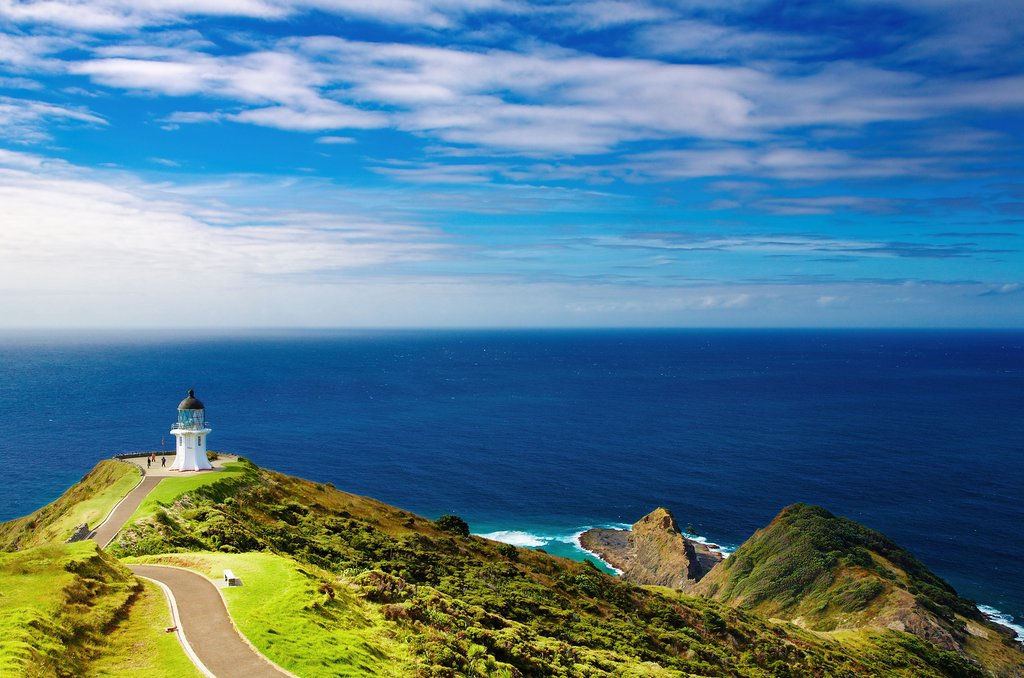
New Zealand has a lot of climatic variety, from sub-tropical Northland to temperate Southland, and high mountains through the center of both main islands. Summer is generally hot in the North Island and warm in the South, while winters are mild and wet in the North Island and drier but often snowy in parts of the South Island. Whenever you plan to go, there will be parts of New Zealand that offer great conditions—find helpful information below on weather, crowds, costs, and more.
## Exploring New Zealand: A Seasonal Guide to the Land of the Long White Cloud
New Zealand, a land of stunning landscapes and diverse climates, offers a unique experience depending on the time of year you choose to visit. From the subtropical north to the alpine south, and from the rugged coastlines to the towering inland mountains, the country presents a tapestry of weather patterns. Generally, the **North Island** tends to be warmer and wetter, while the **South Island** leans towards cooler and drier conditions. However, this is a broad generalization, and the specifics can vary considerably based on altitude, geographic features, and the presence of mountain ranges that can shield certain areas from particular weather systems. Therefore, careful planning is essential to ensure an unforgettable journey.
### The Buzz of Summer (December – February)
Summer in New Zealand is a vibrant and bustling season, drawing visitors from all corners of the globe. The allure of warmer temperatures and extended daylight hours is undeniable, making it a popular time for both international and domestic travelers. Schools and colleges close for a significant portion of December and January, and many New Zealanders take advantage of this time to enjoy a well-deserved break between Christmas and New Year. This results in peak season demand, with many families and individuals returning to their favorite holiday destinations year after year. Popular campsites and accommodations tend to book up months in advance, and securing passage on the inter-island ferry can be a challenge if not planned well ahead.
### Winter’s Embrace (June – August)
In stark contrast, winter in New Zealand can be a rather cold affair, particularly in the southern regions and at higher altitudes in the north. The North Island experiences a significant amount of rainfall during the winter months, making it less appealing for those seeking outdoor adventures. The South Island, on the other hand, receives less rain but more snow, transforming into a winter wonderland that attracts skiers and snowboarders from far and wide. The snow-capped mountains provide a breathtaking backdrop, and the ski resorts offer thrilling experiences for winter sports enthusiasts.
### The Shoulder Seasons: Spring and Fall (September – November & March – May)
For those seeking a balance between favorable weather and fewer crowds, spring and fall present themselves as ideal shoulder seasons. Although summer officially concludes in February, March and April often retain summer-like temperatures, particularly in the northern parts of the country. However, it’s wise to be prepared for an early onset of winter, as the weather can be unpredictable. Similarly, spring can begin with a touch of winter lingering in the air, but by October and November, temperatures and sunlight hours in some locations rival those of summer. While temperatures and weather conditions may be less predictable during spring and autumn compared to summer and winter, the reduced crowds make these seasons particularly appealing for those seeking a more relaxed and intimate travel experience. Embrace the spontaneity and enjoy the unique charm of these transitional months.
| **Season** | **Pros** | **Cons** | **Best for** | **Where to Visit** |
| ———————- | ——————————————————————————————————————————————————————– | ——————————————————————————————————- | —————————————————————————– | ————————————————————————————————————————————————————————————————————- |
| **Summer (Dec-Feb)** | Warm temperatures, long daylight hours (longer in the south), ideal for outdoor activities, swimming in the ocean, and enjoying the beautiful beaches. | Peak tourism season, crowded attractions, higher prices for accommodation and transportation, potential for sunburn and overheating. | Beach activities, hiking in the mountains, water sports, and exploring cities. | **Northland**, the **Coromandel Peninsula**, **South Island** beaches and mountains, **Nelson**, **Golden Bay**, the **Marlborough Sounds**. |
| **Fall (Mar-May)** | Lingering warm weather, beautiful autumn foliage in the south, fewer crowds than summer, warm seas for swimming, ideal for hiking and cycling. | Cool, wintry conditions later in the season, increased rain, potential for unpredictable weather. | Outdoor activities in the mountains, uncrowded beaches, and relaxing vacations. | **Tauranga**, **Hawke’s Bay**, the **Nelson/ Marlborough** areas, allowing visitors to enjoy long hours of sun. |
| **Winter (Jun-Aug)** | Fewer tourists, good skiing and snowboarding opportunities, cozy atmosphere in cities and towns, potential for seeing the Southern Lights. | Rain in the North Island, cold temperatures in both islands, shorter daylight hours, some attractions may be closed. | Skiing and snowboarding, exploring cities, and experiencing winter festivals. | Skiing around **Queenstown**, **Wanaka**, and **Canterbury**, **Milford Sound**, **Dunedin**. |
| **Spring (Sep-Nov)** | Late in the season can be summery, fewer crowds than summer, beautiful wildflowers blooming, ideal for hiking and cycling, potential for seeing baby animals. | Lingering winter temperatures, icy conditions on mountain roads, potential for unpredictable weather. | Skiing in the South Island, hiking in national parks, and enjoying the countryside. | **South Island** national parks, the **Abel Tasman National Park**, the **Whanganui National Park**, lower altitude regions ideal for hikes and water activities. |
### Plan Your New Zealand Adventure
(This section serves to replace the original call to action, expanding on the concept).
Embarking on a journey to New Zealand requires careful consideration of the seasons, your personal preferences, and the activities you wish to pursue. To make the most of your experience, consider consulting with a local travel specialist who possesses in-depth knowledge of the country and can tailor your itinerary to suit your specific needs. These specialists can provide invaluable insights into the best times to visit specific regions, recommend hidden gems off the beaten path, and assist with securing accommodations, transportation, and activities that align with your budget and interests.
### Summer in New Zealand (December to February): A Deep Dive
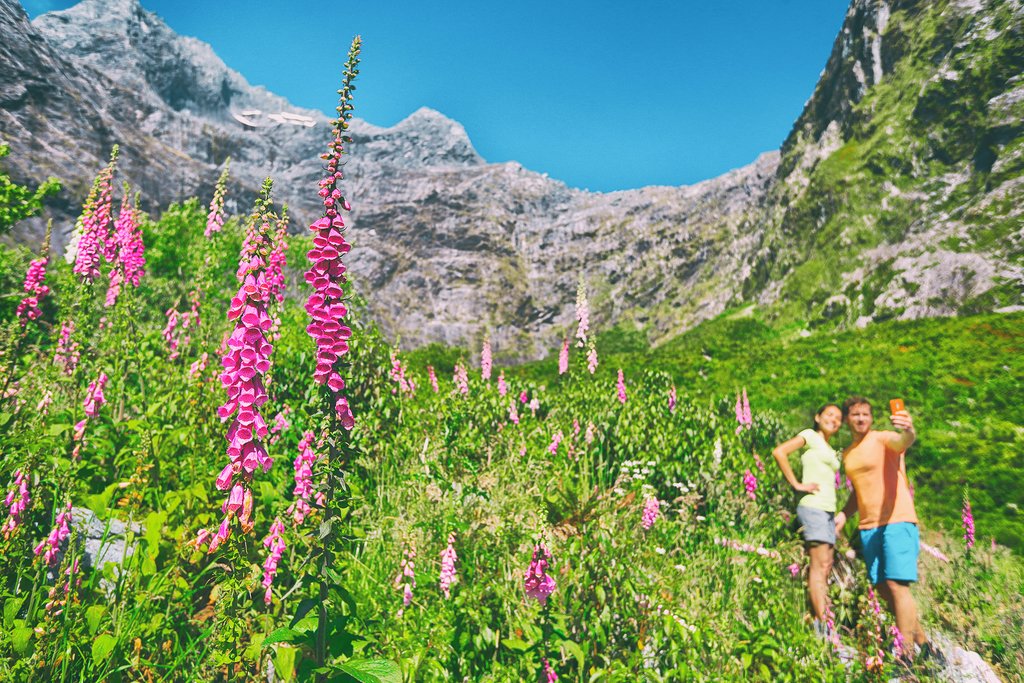
Summer in New Zealand is synonymous with warmth, sunshine, and outdoor adventures. It is generally considered the warmest and driest season, with high temperatures often soaring into the high 70s (Fahrenheit) or even higher. The **North Island** tends to be warmer and more humid than the south, creating a tropical ambiance that beckons visitors to its pristine beaches and lush forests. However, an exception to this rule lies in the northern tip of the **South Island**, encompassing areas such as **Nelson**, **Golden Bay**, and the **Marlborough Sounds**. These regions often experience summer conditions that rival, or even surpass, those of the North Island in terms of heat and sunshine.
It’s crucial to acknowledge that the “summer is drier” rule does not apply uniformly across all regions. The southern and western areas of the South Island tend to receive a substantial amount of rainfall in December, requiring visitors to pack accordingly. Furthermore, the possibility of ex-tropical cyclones originating from the Pacific Islands should not be dismissed. While these events are not annual occurrences, they can bring heavy rain and strong winds for several days, potentially disrupting travel plans. Conversely, droughts can also affect certain parts of the country during the summer months, resulting in prolonged periods with little to no rainfall.
Summer is undeniably the perfect time to indulge in beach activities in New Zealand. As the season progresses, the sea temperatures gradually rise, creating ideal conditions for swimming, surfing, and other water sports. With its extensive coastline, New Zealand boasts a plethora of stunning beaches to choose from. The **Northland**, **Coromandel**, and **Nelson/Tasman** regions are particularly renowned for their exceptional beaches, characterized by long stretches of pristine white or golden sand, charming little bays, crystal-clear water, and Surf Lifesaving patrols on popular beaches during peak times. Aside from the peak period of the New Zealand school holidays, visitors can often enjoy these beaches with ample space and tranquility. In general, the east coast beaches throughout the country are considered more suitable for swimming, while the west coast is more rugged and exposed, with potentially dangerous currents and black sands.
For those seeking outdoor activities beyond the beach, such as hiking, kayaking, and mountain biking, the South Island is an excellent choice. The mountains of **Canterbury** and **Otago** provinces offer cooler temperatures than coastal and lower-altitude areas, making them ideal for strenuous physical activities. While temperatures in the North Island may be too warm for some individuals to fully enjoy extensive outdoor pursuits, it is not necessarily an unsuitable destination during this time of year.
Travelers often overlook the southernmost regions of the South Island and Rakiura/Stewart Island, located off the south coast. However, summer is an opportune time to explore these beautiful and relatively untouched destinations. While temperatures will be cooler compared to the north, and swimming in the sea may not be as appealing, conditions are generally warmer than at any other time of year. The Catlins area of Otago/Southland is a particular highlight, offering stunning coastal scenery and diverse wildlife encounters, as is Rakiura, known for its pristine wilderness and abundant birdlife.
As previously mentioned, summer is the peak season in New Zealand, attracting both international and domestic travelers. To avoid disappointment and ensure a seamless travel experience, it is imperative to book accommodations (including campsites), rental vehicles, domestic flights, and inter-island ferries as far in advance as possible. Failure to do so may result in limited availability or missed opportunities.
### Summer Events: A Celebration of Culture and Festivities
* **Christmas** and **New Year**, **nationwide**: These holidays are widely celebrated throughout New Zealand. Many New Zealanders take the week between Christmas and New Year off work, resulting in increased travel and social gatherings. Christmas is typically a time for family celebrations, and many attractions may be closed for the day. New Year’s Eve is celebrated with large parties in small towns and cities across the country.
* **World Buskers Festival**, **Christchurch**: This late-January festival brings together local and international street performers, musicians, magicians, jugglers, and more, for fun events over a couple of weeks.
* **Waitangi Day**, **nationwide**: This national holiday, observed on February 6, commemorates the signing of the Treaty of Waitangi in 1840 between Maori chiefs and the British Crown. It is a significant day in New Zealand’s history and often serves as a time for reflection, celebration, and discussion of issues facing the nation. Events at Waitangi itself, in Northland’s Bay of Islands, are particularly interesting.
* **Napier Art Deco Festival**, **Napier**: This unique festival celebrates Napier’s Art Deco heritage and commemorates the devastating earthquake that struck the city in February 1931. Travel back to the 1930s and celebrate Napier’s Art Deco heritage. The city was destroyed by an earthquake in February 1931 and rebuilt largely in the Art Deco style.
### Fall in New Zealand (March to May): A Symphony of Colors
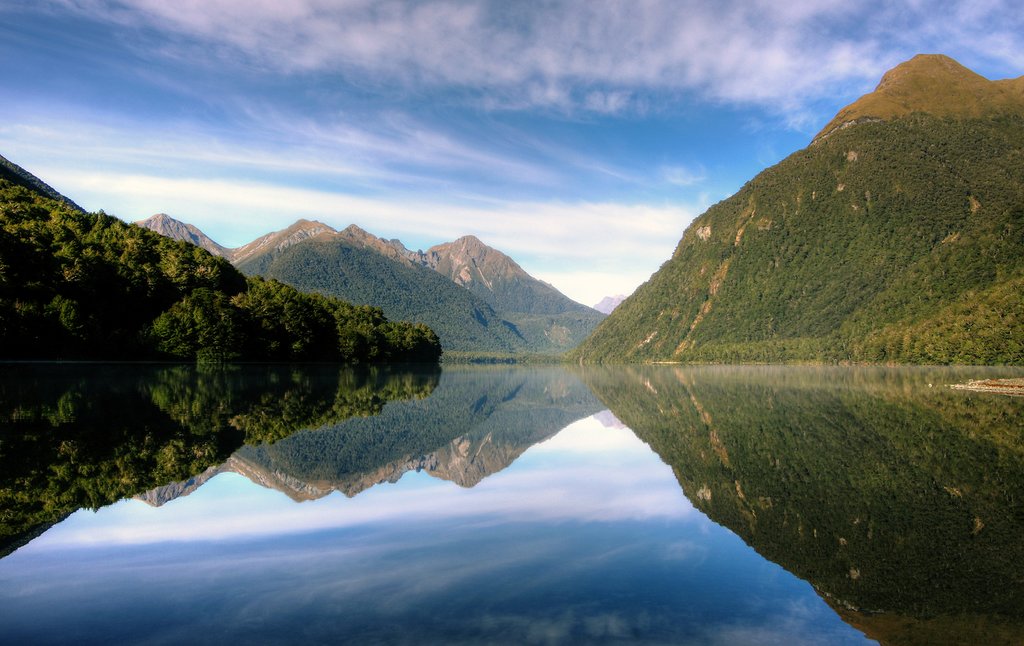
Fall in New Zealand begins in March, offering a diverse range of weather conditions. Early in the season, the northern regions often retain summer-like temperatures, while the south experiences cooler conditions. Average high temperatures range from the high 60s (Fahrenheit) in the north to the mid-50s in the south. Surprisingly, sea temperatures can be conducive to swimming in early autumn, often warmer than in summer despite cooler air temperatures. As leaves change color at higher altitudes and lower latitudes, New Zealand landscapes transform into a palette of warm hues. The North Island, however, does not experience a classic fall season due to the relatively fewer deciduous trees.
Later in the season, temperatures drop, and conditions become colder, wetter, and increasingly dark. The sun sets before 5 pm in the southernmost parts of the country during late autumn and winter. This shift in weather marks a transition into a more subdued and cozy atmosphere.
Autumn is considered a shoulder season in New Zealand, as the influx of international travelers decreases after the peak summer months. With the exception of the Easter holidays in March or April, domestic travel tends to decrease during this season, and New Zealanders often prefer to travel to the Pacific Islands or Australia. This makes autumn an ideal time for travelers seeking a quieter and more peaceful experience.
### Fall Events: From Gastronomic Delights to Jazzy Rhythms
* **Easter**, **nationwide**: This Christian holiday is observed with schools and many workplaces taking a vacation for the Easter long weekend in either March or April, sometimes extending to a week or more. Domestic travel increases at this time.
* **Wildfoods Festival**, **Hokitika**: This March food festival in the small West Coast town of Hokitika offers a unique culinary experience, featuring unusual, weird, and cringe-worthy foods, such as bull testicles and deep-fried insects. More mainstream food options are also available, along with craft beer and fine wine.
* **National Jazz Festival**, **Tauranga**: The National Jazz Festival, established in April 1962, is the longest-running jazz festival in the Southern Hemisphere, showcasing a diverse array of jazz performances.
* **Auckland Comedy Festival**: This festival brings together local and international comedic acts, performing throughout Auckland in May, from intimate venues to large theaters.
### Winter in New Zealand (June to August): A Land of Snow and Serenity
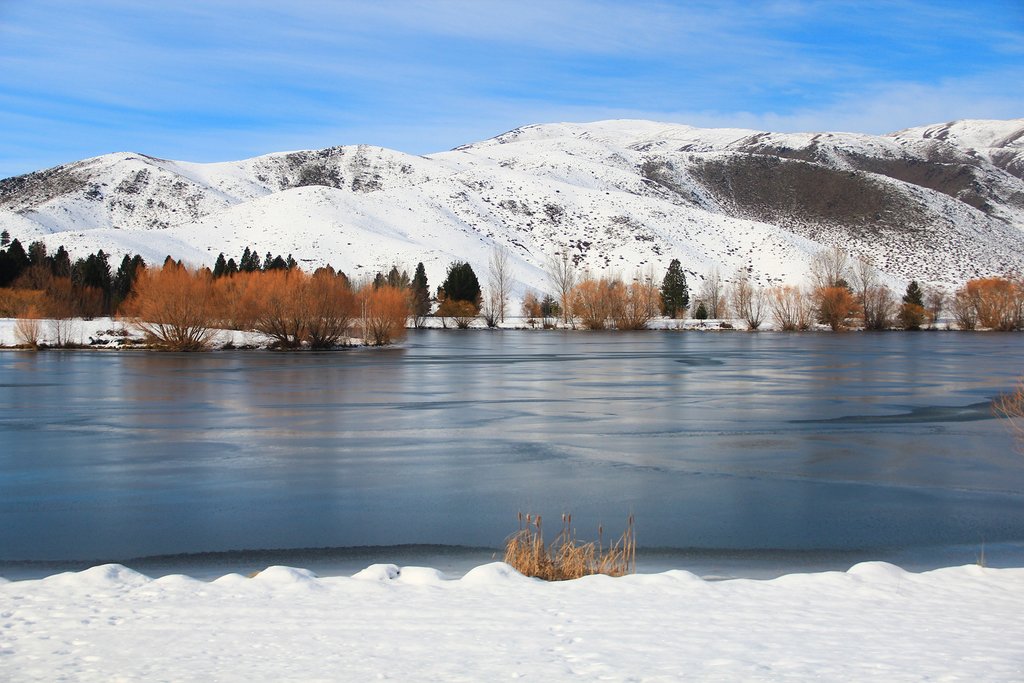
Winter in New Zealand is a season of contrasts. While the North Island experiences significant rainfall, the South Island remains drier as precipitation manifests as snow, particularly at higher altitudes. The ski season commences in mid-June and extends well into the spring, drawing skiers and snowboarders to the slopes. While three ski fields exist on the North Island, near the **Tongariro** area, the majority of ski fields are located in the South Island, particularly around **Queenstown**, **Wanaka**, and the mountainous regions of **Canterbury**.
Even if skiing is not your primary interest, the winter conditions of the lower and mountainous South Island offer a unique charm. General sightseeing is enjoyable, and the wet or cold weather cannot diminish the allure of destinations like **Milford Sound** or the characterful city of **Dunedin**. Road conditions can be challenging during winter, and some routes may be blocked after heavy snowfall, requiring careful planning.
**Northland**, New Zealand’s northernmost province, is affectionately nicknamed “the winterless north.” While this may be an exaggeration, the peninsula north of Auckland does experience milder winter temperatures compared to much of the country. Daytime highs can reach 59°F/15°C, and frosts are uncommon. However, the region also experiences very wet winters.
Winter is typically the busiest season in the South Island, particularly in the mountainous regions, while the North Island experiences an off-season.
### Winter Events: A Celebration of Snow, Film, and Craft Beer
* **Queenstown Winter Festival**: Queenstown, surrounded by majestic mountains, embraces winter with the Queenstown Winter Festival. This festival features free concerts and snow sports events, marking the start of the ski season.
* **Birdman**, **Russell**: Held in Russell, Bay of Islands, this quirky festival features competitors dressed as birds jumping off the Russell Wharf.
* **New Zealand International Film Festival**, **Auckland**: The New Zealand International Film Festival begins in Auckland in July and travels around the country thereafter, showcasing a diverse selection of local and international films.
* **Winter Games**, **Queenstown/Wanaka**: This winter sporting festival focuses on skiing, snowboarding, ice hockey, and curling. Spectators can enjoy watching these sports, even if they do not participate themselves.
* **Beervana**, **Wellington**: Wellington’s Beervana celebrates New Zealand’s thriving craft beer scene, providing a perfect reason to hibernate indoors during the winter months.
### Spring in New Zealand (September to November): A Season of Rebirth and Renewal
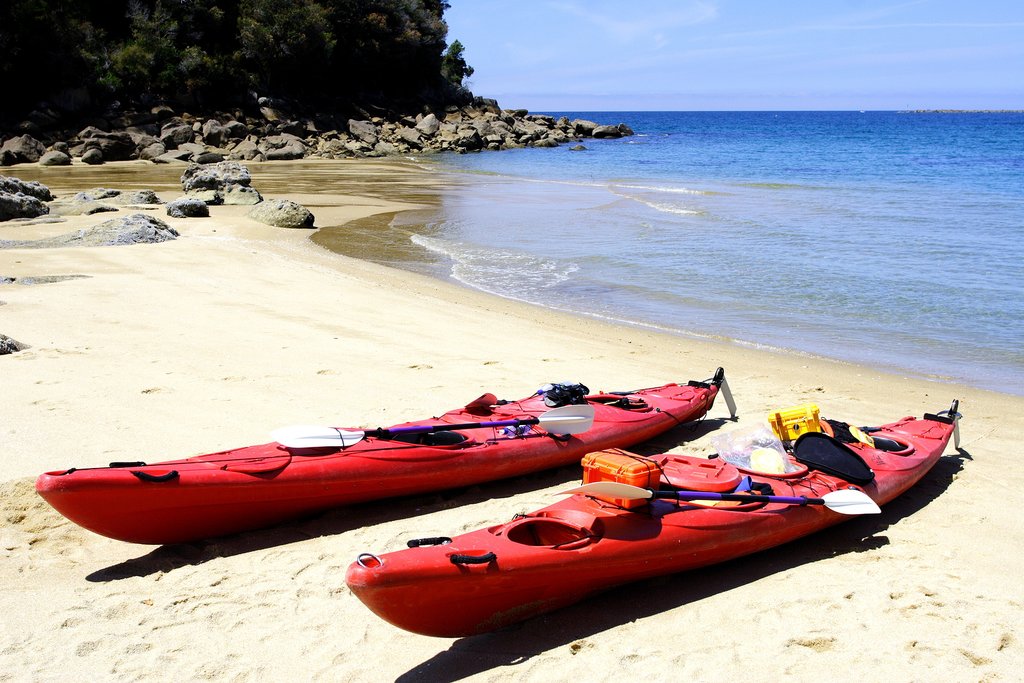
Spring is a delightful time to explore New Zealand, as temperatures rise after winter, days grow longer, and crowds remain smaller at popular destinations. From late October, temperatures can become quite summery, although overnight temperatures may still be relatively cold.
International visitor numbers increase during spring, but domestic travel remains subdued, as families typically reserve their holidays for the summer months. An exception to this trend occurs around ski fields earlier in the season. The ski season often extends into October, making September a popular time for skiing in the central North Island and South Island.
Spring is ideal for visiting lower-altitude national parks for outdoor activities. At higher altitudes, snow can persist well into the spring. However, the Abel Tasman National Park, located at the top of the South Island, and the Whanganui National Park, situated on the North Island, offer enjoyable lower-altitude hikes and water activities, such as kayaking in **Abel Tasman** and rafting in **Whanganui**, with fewer crowds compared to summer.
Spring is also an excellent time for whitewater rafting along New Zealand’s rivers. Although temperatures may be cold (requiring a wetsuit), melting snow in the mountains increases the volume of rivers, creating exhilarating excursions.
### Spring Events: From Art to Wine, A Celebration of Creativity and Flavors
* **World of Wearable Art, Wellington (September)**: This creative art-meets-fashion show showcases local and international fashion designs with a unique twist. The WOW Museum in Nelson can be visited at any time of year and rotates its exhibits after the show in Wellington.
* **Whitianga Scallop Festival (September)**: Seafood enthusiasts will appreciate this festival in the small town on the Coromandel Peninsula.
* **Taste of Auckland (October)**: During this food and drink festival, renowned chefs compete to create the most popular menus, making it a must-attend event for foodies visiting Auckland.
* **Toast Martinborough (November)**: Several vineyards in the famous wine-producing town of Martinborough participate in this annual wine festival, offering visitors the opportunity to sample local wines and enjoy the festive atmosphere.
This expanded content aims to provide a more comprehensive and engaging overview of New Zealand’s seasonal variations, exceeding the original word count while retaining all place names and removing URLs.
B-1832

